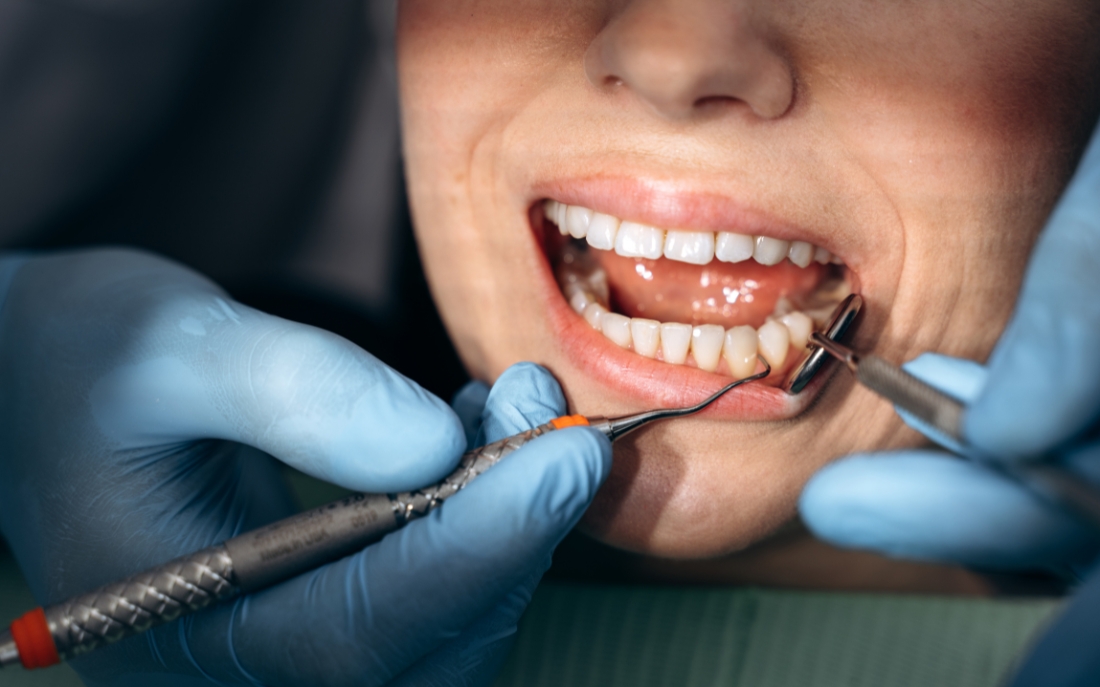What Happens During a Cavity Treatment: A Dental Professional Perspective


Dealing with a cavity might seem daunting, but understanding the process can alleviate much of that anxiety. Have you ever wondered what actually happens during a cavity treatment? Beyond the familiar buzz of the dental drill lies a meticulous procedure designed to restore your tooth’s health and save your smile. Knowing the steps involved can transform your perception of the experience from something to dread into an empowering journey of dental care. Whether you’re facing your first filling or just curious about how your dentist keeps cavities at bay, this blog will guide you through every detail. Keep reading to discover what really happens in the dentist’s chair during a cavity treatment.
Understanding Cavity Treatment: A Step-by-Step Guide
Cavity treatment is a vital procedure that helps protect your teeth from further decay and potential tooth loss. From the moment you walk into the dental office, the goal is to ensure you feel comfortable and informed about each step. Understanding what happens during a cavity treatment can ease anxiety and help you appreciate the importance of regular dental care.
The Initial Assessment and Diagnosis
The first step in tooth cavity treatment is a thorough dental examination. The dentist starts by reviewing your medical history and asking about any symptoms you may be experiencing, such as tooth sensitivity or pain. This initial consultation is essential to ensure the dentist has a complete understanding of your dental health and any underlying conditions that could affect treatment.
Next, the dentist will perform a physical examination of your teeth, often using a small mirror to check for signs of decay. If a cavity is suspected, dental X-rays may be taken to get a closer look at the extent of the decay and to identify any hidden cavities between the teeth or beneath the gum line. This diagnostic process allows the dentist to determine the severity of the cavity and plan the appropriate treatment.
Numbing the Area for a Painless Experience
One of the most common concerns patients have about cavity treatment is the potential for pain. However, modern dentistry techniques prioritize patient comfort, and numbing the area is a key part of this process. Before the procedure begins, the dentist will apply a local anesthetic to the gums surrounding the affected tooth. This numbing agent ensures that you won’t feel pain during the procedure.
For those who are particularly anxious about dental work, sedation options may be available. Sedation dentistry can help you relax during the treatment, making the experience more comfortable and less stressful. Your dentist will discuss these options with you beforehand to ensure you feel at ease.
Removing the Decay: The Core of Cavity Treatment
Once the area is numb, the dentist will begin removing the decayed portion of the tooth. This step is crucial for preventing further damage and restoring the tooth’s health. Using a dental drill or laser, the dentist carefully removes the decayed tissue, ensuring that only the compromised part of the tooth is affected. The use of a high-speed handpiece allows for precision and minimizes discomfort.
As the decayed material is removed, the dentist may periodically rinse the area to keep it clean and ensure all decay has been eliminated. This process is meticulous, as any remaining decay could lead to further issues down the line. Once the dentist is confident that the tooth is free of decay, the next step is to prepare the cavity for filling.
Preparing the Tooth for a Filling
After the decay has been removed, the tooth is prepared for the filling material that will restore its shape and function. The dentist will clean the cavity thoroughly to remove any debris or bacteria, which helps prevent future decay. At this stage, the dentist may also shape the cavity to ensure the filling will fit properly and provide a strong, long-lasting bond.
The type of filling material used can vary depending on the location of the cavity and your personal preferences. Common filling materials include composite resin, amalgam, gold, and porcelain. Composite resin is often chosen for its ability to match the color of natural teeth, making it a popular option for cavities in visible areas. Your dentist will discuss the pros and cons of each material with you before making a recommendation.
Placing the Filling: Restoring Your Tooth’s Structure
With the tooth prepared, the dentist will begin the process of placing the filling. For composite resin fillings, the material is applied in layers, with each layer being hardened using a special curing light. This gradual process ensures a strong bond and a natural appearance. The dentist carefully shapes the filling to match the contours of your tooth, ensuring it blends seamlessly with your natural teeth.
For other materials, such as amalgam or gold, the filling is shaped and then inserted into the cavity in one piece. The dentist Greer will ensure that the filling fits snugly and does not interfere with your bite. Once the filling is in place, any excess material is trimmed away, and the tooth is polished to create a smooth surface. This step is crucial for maintaining your tooth’s function and preventing irritation to the surrounding tissue.
Post-Treatment Care and Recovery
After your cavity treatment, it’s normal to experience some numbness in the treated area for a few hours as the anesthetic wears off. During this time, it’s important to avoid eating until the numbness subsides to prevent accidentally biting your tongue or cheek. Your dentist may provide specific instructions on how to care for your tooth in the days following the treatment.
In most cases, patients can resume their normal activities shortly after the procedure. However, it’s important to be gentle with the treated tooth and avoid chewing on hard or sticky foods for a few days. This precaution helps ensure the filling sets properly and reduces the risk of dislodging the filling material.
Addressing Sensitivity After a Filling
Some patients may experience tooth sensitivity following a cavity treatment, especially when consuming hot, cold, or sweet foods and drinks. This sensitivity is usually temporary and should subside within a few days. If the sensitivity persists or worsens, it’s important to contact your dentist, as it could indicate an issue with the filling or the need for further treatment.
Using toothpaste designed for sensitive teeth can help alleviate discomfort during this period. Additionally, practicing good oral hygiene, including regular brushing and flossing, can help prevent future cavities and maintain the health of your treated tooth.
The Importance of Regular Dental Check-Ups
Cavity treatment is an essential part of maintaining good oral health, but prevention is always the best approach. Regular dental check-ups play a crucial role in catching cavities early, often before they cause significant damage. During these visits, your dentist can identify potential issues and provide guidance on how to improve your oral hygiene routine.
In addition to professional cleanings, your dentist may recommend fluoride treatments or dental sealants to help protect your teeth from decay. Fluoride strengthens the enamel, making it more resistant to cavities, while sealants provide a protective barrier on the chewing surfaces of your teeth, where cavities are most likely to develop.
How to Prevent Cavities in the Future
While cavity treatment is effective in restoring damaged teeth, preventing cavities from forming in the first place is the ultimate goal. Maintaining a consistent oral hygiene routine is the foundation of cavity prevention. Brushing your teeth at least twice a day with fluoride toothpaste and flossing daily can help remove plaque, the sticky film of bacteria that leads to tooth decay.
A balanced diet also plays a significant role in preventing cavities. Limiting sugary snacks and drinks reduces the amount of harmful acids produced by bacteria in your mouth. Instead, focus on eating foods rich in vitamins and minerals that support healthy teeth, such as fruits, vegetables, and dairy products.
Staying hydrated is another key aspect of oral health. Drinking plenty of water helps wash away food particles and bacteria, reducing the risk of cavities. Water also promotes saliva production, which is essential for neutralizing acids and remineralizing your teeth.
Understanding the Risks of Untreated Cavities
Ignoring a cavity can lead to more serious dental issues, including tooth infections, abscesses, and even tooth loss. When left untreated, cavities can penetrate deeper into the tooth, reaching the pulp, where nerves and blood vessels are located. At this stage, a simple filling may no longer be sufficient, and more extensive treatment, such as a root canal or tooth extraction, may be required.
Untreated cavities can also affect your overall health. The bacteria from a decayed tooth can enter the bloodstream, potentially leading to infections in other parts of the body. This connection between oral health and overall health underscores the importance of addressing cavities promptly and maintaining regular dental check-ups.
The Role of Fluoride in Cavity Prevention
Fluoride is a natural mineral that plays a crucial role in preventing cavities and strengthening tooth enamel. Many communities, including Greer, SC, have fluoride added to their public water supply as a measure to reduce the prevalence of cavities. Drinking fluoridated water, using fluoride toothpaste, and receiving professional fluoride treatments at your dentist’s office can all contribute to healthier teeth.
For individuals at higher risk of cavities, such as those with a history of frequent dental issues or certain medical conditions, your dentist may recommend additional fluoride treatments or supplements. These measures can provide an extra layer of protection against decay and help maintain your oral health over the long term.
The Importance of Patient Education in Cavity Treatment
Educating patients about cavity treatment and prevention is a key aspect of dental care. Understanding the causes of cavities, the steps involved in treatment, and how to prevent future issues empowers patients to take control of their oral health. Dentists play a vital role in providing this education, helping patients make informed decisions about their treatment options and lifestyle choices.
During your cavity treatment, don’t hesitate to ask your dentist any questions you may have. Whether you’re curious about the filling material, the steps involved in the procedure, or how to improve your oral hygiene, your dentist is there to provide the information and support you need.
Long-Term Outcomes of Cavity Treatment
When performed correctly, cavity treatment can restore the function and appearance of your tooth, allowing you to maintain a healthy smile. The success of the treatment depends on several factors, including the skill of the dentist, the quality of the filling material, and your commitment to good oral hygiene.
Regular dental visits and at-home care are essential for maintaining the results of your cavity treatment. By following your dentist’s recommendations and adopting a proactive approach to your oral health, you can enjoy the benefits of a healthy, cavity-free smile for years to come.
A Final Word on Cavity Treatment
Cavity treatment is a straightforward procedure that plays a crucial role in preserving your dental health. Understanding each step of the process, from diagnosis to recovery, can help you feel more confident and comfortable during your visit to the dentist. By staying informed and proactive, you can protect your teeth from decay and enjoy a lifetime of healthy smiles.
For those in Greer, SC, seeking comprehensive dental care, finding a trusted dentist who prioritizes patient education and comfort is essential. Whether you’re dealing with a cavity or simply looking to maintain your oral health, a knowledgeable dentist can provide the guidance and treatment you need.
In the context of cavity treatment in Greer, SC, it’s clear that prevention and early intervention are key to maintaining a healthy, vibrant smile. Regular check-ups, a consistent oral hygiene routine, and a healthy diet are all part of the equation for avoiding cavities and keeping your teeth in top condition.